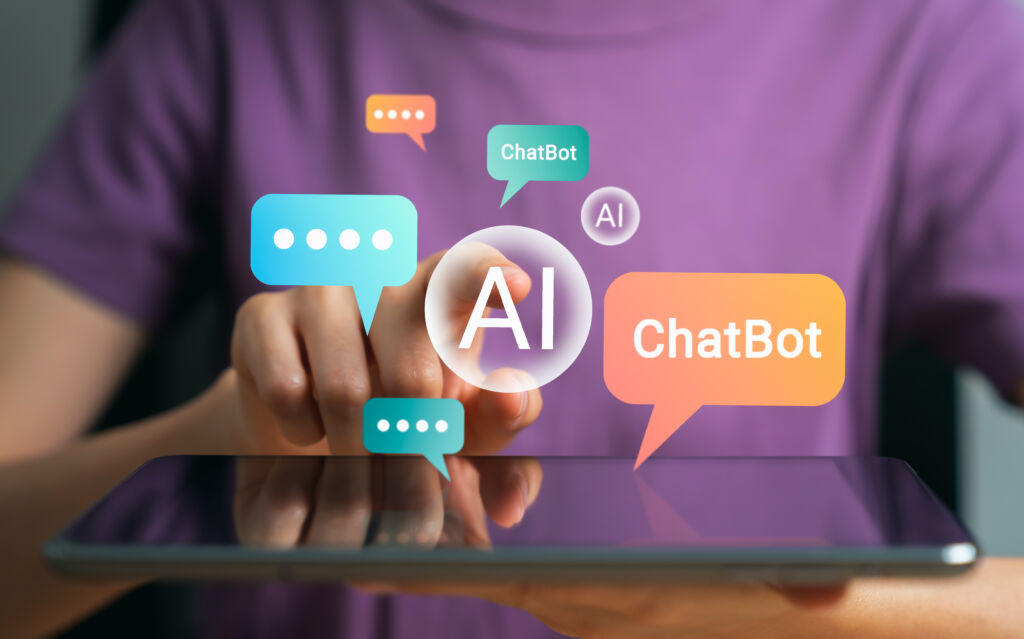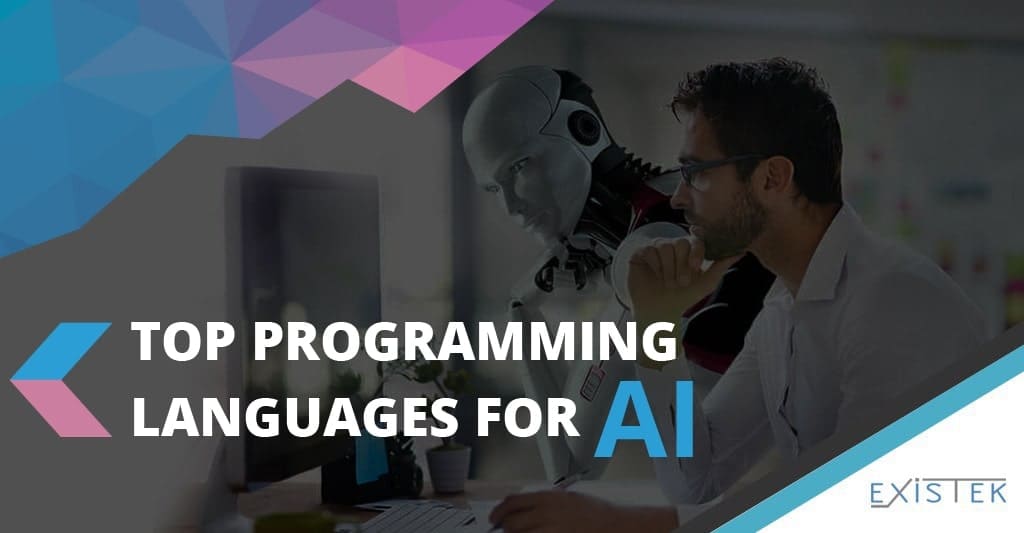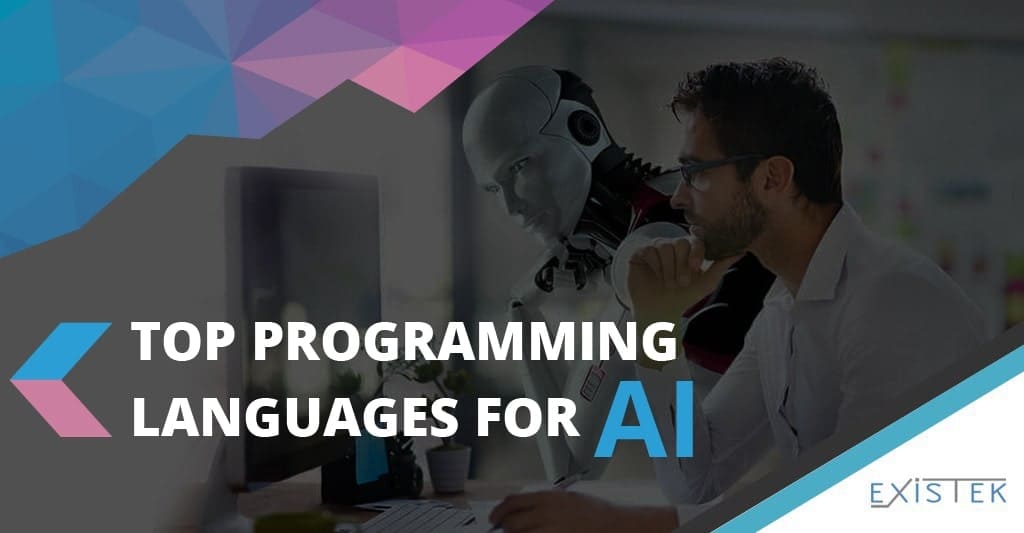Can AI help programmers learn new programming languages faster? This question is rapidly moving from theoretical possibility to practical reality. The integration of artificial intelligence into programming education is transforming how developers acquire new skills, offering personalized learning paths, intelligent code assistance, and immediate feedback mechanisms that were previously unimaginable. This exploration delves into the exciting potential of AI-powered learning platforms, code generation tools, and adaptive practice systems, examining their impact on programmer efficiency and the future of coding education.
From AI-driven code completion tools that predict and suggest the next lines of code to interactive platforms that adapt to individual learning styles, AI is poised to revolutionize the learning process. We’ll examine the advantages and disadvantages, addressing ethical concerns and potential limitations, ultimately painting a comprehensive picture of how AI is reshaping the landscape of programming education.
AI-Powered Learning Platforms for Programming Languages

AI is rapidly transforming how we learn, and programming language acquisition is no exception. AI-powered platforms offer personalized learning paths, adaptive assessments, and immediate feedback, potentially accelerating the learning process significantly compared to traditional methods. These platforms leverage machine learning algorithms to analyze a learner’s progress, identify areas needing improvement, and tailor the learning experience accordingly. This leads to increased efficiency and a more engaging learning journey.
AI-Powered Learning Platforms: A Feature Comparison
The following table compares three prominent AI-powered platforms for learning programming languages. The selection reflects a range of approaches and pricing models to illustrate the diversity in the market. Note that user review summaries are generalized and represent overall sentiment; individual experiences may vary.
| Platform Name | Key Features | Pricing Model | User Reviews Summary |
|---|---|---|---|
| Codecademy Pro | Personalized learning paths, interactive exercises, code challenges, real-world projects, AI-powered code review, progress tracking. | Subscription-based, various tiers with different features. | Generally positive, praising the interactive approach and personalized learning paths. Some users mention a steeper learning curve for beginners on certain tracks. |
| DataCamp | Focus on data science and related programming languages (Python, R, SQL). Interactive courses, coding challenges, real-world datasets, career tracks. AI-driven recommendations and progress tracking. | Subscription-based, various plans with varying access to courses and features. | Mostly positive feedback, highlighting the practical application of learned skills and the quality of the courses. Some users find the subscription cost a barrier. |
| Educative.io | Interactive courses in a variety of programming languages, including web development and DevOps. Uses an interactive coding environment within the browser, allowing for immediate feedback. AI-powered content recommendations. | Subscription-based, with different pricing tiers depending on access and features. | Users generally appreciate the interactive learning environment and the wide range of courses. Some users suggest improvements to the search functionality. |
Pedagogical Approaches for Accelerated Language Acquisition
These platforms employ several pedagogical strategies to accelerate language acquisition. Adaptive learning, a core feature, adjusts the difficulty and content based on individual performance. This prevents learners from being overwhelmed by overly difficult material or bored by overly simplistic exercises. Gamification, through points, badges, and leaderboards, motivates learners and provides a sense of accomplishment. Immediate feedback on code correctness and style enhances understanding and reduces the time spent on debugging.
Finally, real-world projects provide practical application of learned concepts, reinforcing understanding and building confidence.
Examples of AI-Personalized Learning Experiences
AI tutors can personalize the learning experience in numerous ways to cater to different learning styles. Five examples include:
- Visual Learners: AI can generate visual aids, such as diagrams and animations, to illustrate complex concepts. For example, an AI tutor could create a visual representation of a linked list data structure or a flowchart for a specific algorithm.
- Auditory Learners: The AI could provide audio explanations of code snippets and concepts, supplementing visual learning materials with verbal descriptions.
- Kinesthetic Learners: The AI could suggest hands-on projects that involve building small applications or games, allowing learners to actively engage with the material.
- Reading/Writing Learners: The AI could provide detailed written explanations of concepts and encourage learners to write code and document their work, fostering deeper understanding through active recall.
- Logical/Mathematical Learners: The AI could emphasize the logical structure of programming languages and provide exercises that challenge problem-solving skills, such as algorithm design and data structure implementation.
AI’s Role in Code Generation and Assistance

AI is rapidly transforming the software development landscape, and its impact on learning new programming languages is significant. AI-powered tools are no longer just assisting programmers; they are actively participating in the coding process, offering substantial benefits for both experienced developers and those just beginning their coding journey. This section explores how AI facilitates code generation and provides assistance, examining its influence on programmer productivity and highlighting both the advantages and disadvantages of this increasingly prevalent approach.AI tools are revolutionizing how programmers learn and utilize new programming languages by automating several aspects of the coding process.
This automation streamlines the learning curve, allowing learners to focus on conceptual understanding rather than getting bogged down in syntactical details. The result is a potentially faster and more efficient learning experience.
Code Generation and Completion Capabilities
Many AI-powered code editors and IDEs offer code generation and completion features. These tools leverage machine learning models trained on vast datasets of code to predict the next line of code a programmer might write, or even generate entire functions based on natural language descriptions or comments. For instance, given a comment like “// Function to calculate the factorial of a number,” an AI assistant might generate the complete function in Python, Java, or JavaScript, adapting the syntax and structure appropriately for the chosen language.
This capability accelerates the coding process significantly, allowing learners to quickly see working examples and experiment with different approaches. Another example would be using an AI tool to generate boilerplate code for common tasks like setting up a database connection or creating a basic web server. This eliminates repetitive tasks, freeing the learner to focus on higher-level concepts.
Impact on Programmer Productivity and Efficiency
AI-assisted coding demonstrably boosts programmer productivity and efficiency, especially when learning a new language. By automating repetitive tasks and providing instant feedback, AI tools allow learners to experiment more freely and iterate faster. Consider a scenario where a learner is struggling with a specific aspect of a new language’s syntax. An AI tool can provide immediate suggestions, highlight potential errors, and offer alternative solutions, significantly reducing the time spent debugging and troubleshooting.
This accelerated feedback loop allows for a more rapid grasp of the language’s nuances. The result is a steeper learning curve and a quicker transition to productive coding in the new language. Studies have shown that AI-powered code completion can increase coding speed by as much as 30%, directly impacting a programmer’s overall efficiency.
Benefits and Drawbacks of AI-Driven Code Generation in Learning
While the benefits of AI-assisted code generation are considerable, it’s crucial to acknowledge potential drawbacks. One key advantage is the accelerated learning process; however, over-reliance on AI-generated code can hinder a deep understanding of underlying concepts. Learners might become dependent on the tool without truly grasping the logic and principles behind the generated code. This could lead to a superficial understanding and difficulties in adapting to more complex or non-standard situations.
Another potential drawback is the potential for the AI to generate suboptimal or inefficient code, especially in situations where the input is ambiguous or incomplete. Learners need to critically evaluate the generated code and understand its limitations. Therefore, a balanced approach is necessary, utilizing AI tools as powerful assistants while maintaining a focus on fundamental programming principles and independent problem-solving skills.
The ideal scenario involves using AI to accelerate the learning process, but always validating and understanding the generated code.
AI-Driven Practice and Feedback Mechanisms
AI significantly enhances programming language learning by providing immediate, personalized feedback and adaptive practice opportunities. This surpasses traditional methods, which often rely on delayed feedback from instructors or lengthy debugging processes. The integration of AI allows for a more dynamic and efficient learning experience, accelerating the acquisition of programming skills.AI-driven practice and feedback mechanisms offer learners real-time insights into their code, enabling faster identification and correction of errors.
This immediate feedback loop accelerates the learning process and improves code quality. The systems also adapt to individual learning styles and paces, ensuring a personalized and effective learning journey.
AI-Powered Code Feedback System Design
An effective AI-powered code feedback system would consist of several key components. First, a code editor with integrated AI capabilities would analyze code as it’s written, providing real-time feedback on syntax, semantics, and style. This feedback would be presented directly within the editor, highlighting errors and suggesting corrections. For example, if a learner forgets a semicolon in a Java statement, the system would immediately flag the error and suggest the correct placement.
The user interface would be clean and intuitive, perhaps using color-coding to distinguish between different types of errors (syntax errors in red, style suggestions in yellow, potential logic errors in orange). A detailed explanation of each error or suggestion would be available with a single click, linking to relevant documentation or tutorials. The system would also incorporate a style checker, ensuring adherence to best practices and consistent code formatting.
This could involve automatic formatting corrections or suggestions for improvements in code readability and maintainability. Furthermore, the system could provide suggestions for improving algorithm efficiency or code structure.
AI-Powered Adaptive Coding Challenges
AI can generate coding challenges tailored to a learner’s current skill level. Initially, the system might present simple problems focusing on fundamental concepts. As the learner progresses and demonstrates proficiency, the challenges become progressively more complex, introducing new concepts and requiring more sophisticated problem-solving skills. For example, an early challenge might involve writing a function to calculate the factorial of a number, while later challenges could involve implementing a sorting algorithm or working with data structures like graphs or trees.
The AI system would track the learner’s performance, adjusting the difficulty of subsequent challenges based on their success rate and problem-solving strategies. The system could also offer hints or partial solutions if the learner gets stuck, providing guidance without directly giving away the answer. This adaptive approach ensures that learners are consistently challenged but not overwhelmed, optimizing their learning experience.
For instance, if a learner struggles with a particular data structure, the AI could generate more challenges focusing on that specific concept until mastery is achieved.
Comparison of AI-Driven and Human Feedback
While both AI-driven and human feedback are valuable in programming education, they offer distinct advantages and disadvantages. AI provides immediate, consistent feedback on a large volume of code, identifying syntax errors and style issues with high accuracy. This is particularly beneficial for learners who need frequent reinforcement and immediate correction of mistakes. However, AI struggles with understanding nuanced logic errors or providing feedback on overall program design and architecture.
Human feedback, on the other hand, offers a deeper understanding of the code’s logic and intent, providing more holistic feedback and guidance on higher-level design principles. Humans can also better adapt to individual learning styles and provide personalized support and encouragement. Therefore, an ideal learning environment would integrate both AI-driven and human feedback mechanisms, leveraging the strengths of each approach.
For example, AI could provide initial feedback on syntax and style, while a human instructor could review more complex code and offer guidance on program design and problem-solving strategies. This blended approach ensures a comprehensive and effective learning experience.
Addressing Challenges and Limitations: Can AI Help Programmers Learn New Programming Languages Faster?
AI-powered tools offer significant potential for accelerating programming language acquisition, but their adoption isn’t without challenges. These tools, while powerful, are susceptible to biases, raise ethical concerns, and can lead to problematic over-reliance if not used judiciously. A balanced approach, acknowledging both the benefits and limitations, is crucial for effective and responsible integration of AI in programming education.AI-powered learning platforms, while promising, are not without their limitations.
These limitations stem from both technical and ethical considerations, necessitating careful consideration and mitigation strategies.
Potential Biases and Limitations in AI-Powered Learning Tools
AI models are trained on vast datasets, and if these datasets reflect existing biases (e.g., gender or racial biases in the tech industry), the AI system will likely perpetuate these biases in its teaching methods and feedback. For instance, an AI tutor might provide more challenging problems to male students than female students, implicitly reinforcing existing stereotypes. Mitigation strategies include carefully curating training datasets to ensure representation and diversity, employing rigorous testing for bias detection, and incorporating human oversight in the design and implementation of AI learning tools.
Regular audits and updates to the algorithms are also vital to adapt to evolving understanding of fairness and equity.
Ethical Considerations of AI-Accelerated Programming Language Learning
The accelerated learning enabled by AI raises ethical questions, particularly concerning its impact on the job market. The potential for rapid skill acquisition could lead to increased competition among programmers, potentially affecting employment prospects for those who lack access to or proficiency with these AI-powered tools. Furthermore, over-reliance on AI for code generation might diminish the development of problem-solving and critical thinking skills vital for a successful career in software development.
Addressing these concerns requires careful consideration of equitable access to AI-powered learning tools, focusing on upskilling and reskilling initiatives for displaced workers, and emphasizing the importance of human ingenuity and creativity in the programming process. Promoting digital literacy and critical thinking alongside AI-assisted learning is crucial. A societal dialogue is needed to navigate the ethical implications of AI’s role in reshaping the tech workforce.
Potential Problems from Over-Reliance on AI-Assisted Learning
Over-dependence on AI-assisted learning can lead to several significant problems. The ability to quickly generate code using AI tools might lead to a decreased understanding of fundamental programming concepts and underlying algorithms. This superficial understanding can hinder a programmer’s ability to debug effectively, adapt to new challenges, or design efficient and maintainable code. Moreover, relying solely on AI-generated solutions without critical evaluation could stifle creativity and problem-solving skills, essential aspects of software development.
Students might become overly reliant on AI for immediate answers, hindering their development of independent thinking and troubleshooting abilities. For example, a student might consistently use an AI tool to generate code for assignments without truly grasping the underlying logic, resulting in a lack of conceptual understanding that could manifest in later, more complex projects. This ultimately limits their long-term growth as programmers.
Future Directions and Research

The integration of AI in programming language education is still in its nascent stages, offering a vast landscape for future exploration and development. Significant advancements are expected in the coming years, driven by ongoing research and the rapid evolution of AI capabilities. This section Artikels key research areas and explores how AI’s advancements will shape the future of AI-powered programming language learning tools.The potential for AI to revolutionize programming education is immense.
By focusing research efforts on specific areas, we can unlock more effective and personalized learning experiences for programmers of all levels. This will not only accelerate the learning process but also foster a deeper understanding of programming concepts and best practices.
Promising Research Areas in AI-Powered Programming Language Education
Five promising research areas warrant significant attention: Firstly, the development of more sophisticated AI tutors capable of understanding nuanced student errors and providing tailored feedback. Secondly, research into adaptive learning pathways that dynamically adjust based on individual learning styles and progress. Thirdly, the creation of AI-driven assessment tools that go beyond simple code correctness to evaluate problem-solving approaches and code quality.
Fourthly, exploration of the use of AI to generate diverse and engaging programming challenges tailored to specific learning objectives. Finally, research into the ethical implications of AI-driven programming education, ensuring fairness, accessibility, and responsible use of technology.
Advancements in AI Enhancing Programming Language Learning Tools, Can AI help programmers learn new programming languages faster?
Advancements in large language models (LLMs) over the next five years will significantly enhance AI-powered programming language learning tools. For instance, LLMs can be leveraged to create more natural and intuitive interfaces for interacting with AI tutors. They can also be used to generate more contextually relevant and helpful explanations of programming concepts, and to provide more sophisticated code completion and debugging assistance.
Imagine an AI tutor that not only identifies errors in a student’s code but also provides a step-by-step explanation of the error, suggesting alternative solutions, and even generating sample code to illustrate the correct approach. This level of personalized assistance is currently beyond the capabilities of existing tools but is within reach with advancements in LLMs and their integration into educational platforms.
Platforms like Khan Academy and Codecademy could seamlessly integrate these advanced LLMs to create truly personalized learning experiences.
AI-Driven Personalization of Learning Paths
AI has the potential to personalize the learning path for each individual programmer by analyzing their strengths and weaknesses. This can be achieved through continuous monitoring of student performance, identifying areas where they excel and areas where they struggle. For example, an AI system could identify that a student consistently struggles with recursion, prompting the system to provide additional practice problems, supplementary learning materials, and targeted feedback focused on that specific concept.
Conversely, if a student demonstrates mastery of a particular concept, the AI can adjust the learning path to introduce more challenging topics, preventing boredom and maintaining engagement. This dynamic adjustment ensures that each student receives the optimal level of challenge and support, maximizing their learning efficiency and accelerating their progress. Such a system could significantly reduce the learning curve for complex programming languages and help students master the language more efficiently.
Final Summary
The potential of AI to accelerate programming language acquisition is undeniable. While challenges remain, such as addressing biases and ensuring ethical implementation, the trajectory points towards a future where AI tutors personalize learning, code generation tools boost productivity, and adaptive practice systems optimize skill development. The integration of AI isn’t about replacing programmers, but empowering them with intelligent tools that significantly reduce the learning curve and enhance their overall capabilities, paving the way for a more efficient and inclusive programming community.

